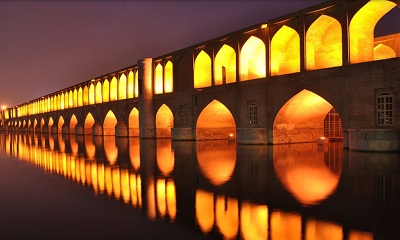Esfahan or Isfahan, located in the center of Iran and the north bank of the Zayandeh River at an elevation of about 1,600 metres.
Known as the pearl of the orient, the city has a wide variety of magnificent historical monuments from different eras, especially from the time periods which was the capital of Seljuq (1051–1118) and Safavid dynasties (1598–1722). Throughout history, it has been one of the main centers of trade routes from Iran. From the time of the Achaemenids (550 BC -331 BC), Isfahan was one of the favorite cities of the kings, and as early as the fifth century AD it was considered as one of the kings’ summer residences.
The royal love for the city was especially flourished during the Safavid monarch Shah Abbas (1587-1629) who has rebuilt Esfahan into one of the largest and most beautiful cities of the 17th century. Since then, it has remained to be an attractive city that has seduced numerous poets and travelers.
Esfahan has a mild climate, with a pleasant period from May to September. A collection of beautiful gardens and tree-lined boulevards, eye-catching bridges, historic Bazar, central square, and magnificent religious buildings all around the city together with the UNESCO-listed sites give Isfahan a visual appeal unmatched by any other Iranian city. That has given rise to the Iranian saying “Esfahan is half the world”
Area: 551 Km2
Population: 3,989,070
Province: Isfahan
Other ethnicities: Persian
Language: Persian
Tourist attractions:
– Naqsh-e Jahan square
– Imam Mosque
– Sheikh Lotfollah Mosque
– Friday (Al-Jum’a) Mosque
– Ali Qapu
– The Chehel Sutun (Forty Columns) Palace
– Hasht Behesht Palace
– Chahar Bagh School
– Chahar Bagh Boulevard
– Si-o-se Pol
– Khaju Bridge (Shahi Bridge)
– Shahrestan Bridge
– Marnan Bridge
– Pol-e-Joui or Choobi (Joui Bridge)
– Vank Cathedral
– Manar Jonban (the swinging minaret)
– Atashgah (Fire Temple)
– Thakht-e Foulad
– Old Qaisarieh Bazaar
UNESCO World Heritage sites: Naqsh-e Jahan Square
